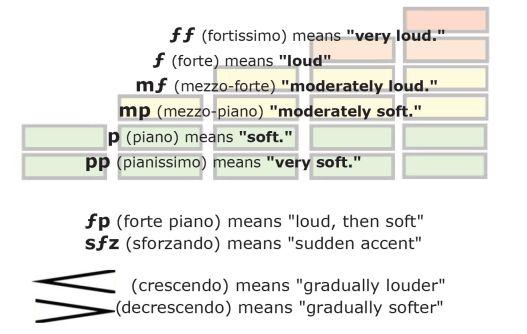The ‘Missing Element’ That Will Help You Express Yourself Through Music And Build Creative Musical Expression Skills
Are you tired of feeling frustrated because you don’t know how to truly express yourself through the music you write? Have you ever worked on a song for many hours only to end up trashing it because it didn’t sound the way you wanted it to? Do you wish you could uncover the secret behind how great songwriters seem to effortlessly write music that really communicates to you at a deep level?
Mastering musical expression takes a lot of practice and dedication. Just like you, all songwriters must face the frustration of not knowing how to express themselves through music before they can begin to create truly great songs. For some of these songwriters, it will take them many years before they can write music that they really feel satisfied with.
The truth is, one of the reasons why many songwriters take so long to develop their songwriting skills is that they frequently overlook or take for granted the importance of crucial songwriting elements. Fortunately, after reading this article you can get started right away developing better musical expression skills and writing more creative songs.
In this article, I will be focusing on one of the most common ‘missing elements’ for songwriters that is frequently overlooked (leading to lackluster songs and bland musical passages). The songwriting element I am going to talk about in this article is the element of “Dynamics”.
CAUTION: If after reading the previous sentence you thought to yourself something like the following: “Dynamics?! Right, making music loud and soft… I already know about this stuff!” … then you are already in the wrong mindset… Do not make the same mistake that so many other songwriters make by overlooking the power of this musical element! As a songwriter looking for different ways to express yourself through music, you might pass over dynamics while thinking about things such as "What chord comes next?”, “How do I want the melody to sound?”, “What technique should I use here?” or “How many measures long should this or that part be?”
Unfortunately, by skipping over dynamics, you are completely missing out on one of greatest tools for musical expression.
Now, before I get more into the specifics behind dynamics in music, I want to first share with you some of the great benefits that you will gain in your music expression skills when you learn to effectively use this element. When you begin focusing on utilizing dynamics in your music, you will:
- Gain many more options for expressing new ideas in music without even changing a single note.
- Develop the ability to immediately alter the feeling of tension or relaxation in your songs.
- Add an entirely separate dimension to your music, making your musical ideas reach out to your listeners like a 3D image on a movie screen.
A Basic Understanding Of Dynamics In Music
Dynamics are commonly defined as the general volume level in a piece of music. This can refer to the volume level of a song as a whole or more specifically (on a smaller scale) each individual section, phrase, or note in a song. When reading music, there are specific letters used to describe when a musician is to play with particular dynamics. These letters have been used commonly in music for hundreds of years, and are understood universally among musicians. Here are some examples:

How To Use Contrasting Dynamics For Musical Expression
By contrasting different dynamics you can effectively maintain a listener's interest. Consider how this is used in a typical soft rock/ballad song. Most of the song will be played on acoustic guitar (unplugged) in a very soft manner. The lyrics will be sung with great care and quiet passion. Commonly, these types of songs will start with a soft intro that uses only acoustic guitar and voice (no drums). Then the drums will come in after the first verse or chorus to provide a louder dynamic range (contrast) to the song. As a greater contrast, the song may break into solo section with loud distortion guitar and high pitched notes.
After the solo section, the acoustic guitar will play again and the dynamics return to a softer feel. This type of song will have a great effect on reaching people from a dynamic level due to its strong contrast. Keep in mind also that when you are writing music you are not limited to only ‘loud’ and ‘soft’. Remember that you can use loud, soft, very loud, very soft, and everywhere in between.
How To Use Dynamics Within A Single Melody
To take the expressive use of dynamics to a more specific level, try using different dynamics within a single melody (as opposed to an entire section). For example, try starting a melody soft, then gradually increasing the volume until the phrase is over to where the end is very loud. This is called a “crescendo” (a gradual building of volume in music). The opposite of this, is a “decrescendo”.
Also, try accenting specific notes in a melody to make them louder or softer in order to create contrast. This can be effective when you are repeating a melody nearly note for note. This will enable you to express a lot through your music without even changing a single note.
Learn more about writing a great melody by downloading this free songwriting techniques eBook about the 7 musical elements.
Using Silence To Creatively Express Yourself In Your Music
Using silence or “rests” creatively can be a very powerful tool to enhance the dynamics in your music. Silence can create unique variance in the rhythm of your phrasing. For example, have you ever been listening to ‘loud’ music on your stereo at home when suddenly someone walks in and turns it off. Your reaction is "Hey, what happened to my music?" This feeling can be duplicated through the use of silence to rekindle interest in a listener because they want to find out what will be next. Try inserting silence (of different lengths) into different parts of your music and see what results you get.
However, also know that this is not always appropriate for every situation, and may come across as awkward if used to excess. You will need to judge and see how it sounds for you, and whether it is appropriate for the music you are making.
How Dynamics Are Frequently Used For Musical Expression
Movies/film scores are great tools for studying the way dynamics are used for musical expression. Have you ever watched a movie and paid attention to the music while you were following the story line or actors? One thing you probably noticed (whether it was consciously or subconsciously) was how the dynamics in the music or sound effects matched what was taking place in the scene.
Example 1 - Dynamics used to express a sudden surprise:
For instance, visualize that the main character in a movie is a man standing at a crowded intersection in a big, lively city (imagine lively music being played in the background). As the character is looking up and around at the tall buildings and sights of the city, the "walk" sign turns on. Suddenly, the other people around him begin massively moving forward to cross the street, bumping into him and pushing him aside along the way.
He quickly snaps out of his temporary daydream and in the process drops his suitcase. He adjusts himself, reaches down to pick up his suitcase, and scurries quickly to begin crossing the street. He looks down at his watch. He is already 10 minutes late for his meeting. Then, just as he nears the sidewalk, *screech* a car jams on the breaks and comes to a sudden stop right in front of him.
How would you expect the music to express the level of stress in the scene at the point of the final climax? Most likely: As a reaction to the shock that the man feels as a car suddenly stops right in front of him, the music would suddenly burst out in a quick, loud, accented manner.
Example 2 - Dynamics used to express rising interest or diminishing interest:
Now, imagine a romantic scene. A couple is reunited at the airport toward the end of a movie. At first, they are not sure if it will really work out (the music is very soft at this point). They talk for a while, and mutually decide: "Perhaps it was all really just a fantasy after all. I guess we were really never meant to be." They begin to go their separate ways.
The camera cuts to the man unlocking his car as he is thinking about past memories and good times with his lover. Then, the camera cuts to the woman, still sitting in the airport wondering what to do with her life. All of a sudden, the man realizes he was wrong and can't live without her… Now the volume of the music begins to build (through a crescendo).
Next, we see the man running back into the airport, desperately looking for the love of his life (music keeps building and building). Then, he sees her. She sees him. They run toward each other (music: building....) and they embrace! Now the music has climaxed, and is at its very loudest.
Example 3 - Dynamics enhanced with silence (rests) to express mystery/the unknown:
As a final example, imagine a horror movie where the character is walking around in a dark house all alone. Slowly and cautiously, he creeps from one room to the next. You hear the floor creek from below with each step. "Hello?" he says with a frightened tone. There is a quick musical crescendo (creepy music), building from very soft to very loud. He snaps around and looks behind… Silence. Nothing there but an old, dusty record player.
The man laughs anxiously and shakes his head.
He reaches into his pocket and pulls out a small flashlight. Click.
He turns it on and inspects the record player. "How old is this thing?" Just then, he hears a creek in the floor. It's directly behind them. A blank look falls over his face as he slowly turns around..."Helllooo?"
The camera takes a new perspective, and all we can see is the outside of the old house.
We hear a horrific scream.
Then........silence.
So as you can see, dynamics are used effectively to convey ideas for very specific situations. This of course is not limited to only movies, but any situation when you are trying to express an idea musically. Remember, dynamics can be over or under used (especially with silence/rests), so make sure to pay attention to the contrast or lack of contrast you are creating.
Dynamics (that we have seen in the article above) is but one of the 7 elements of music. Yes, there are only 7! You can get to know more about the other elements of music and how to use them to express the emotions YOU want by downloading this FREE eBook on the 7 musical element. Click on the button below to get it!
Get tons of ideas for your songs by taking this songwriting ideas audio course .
